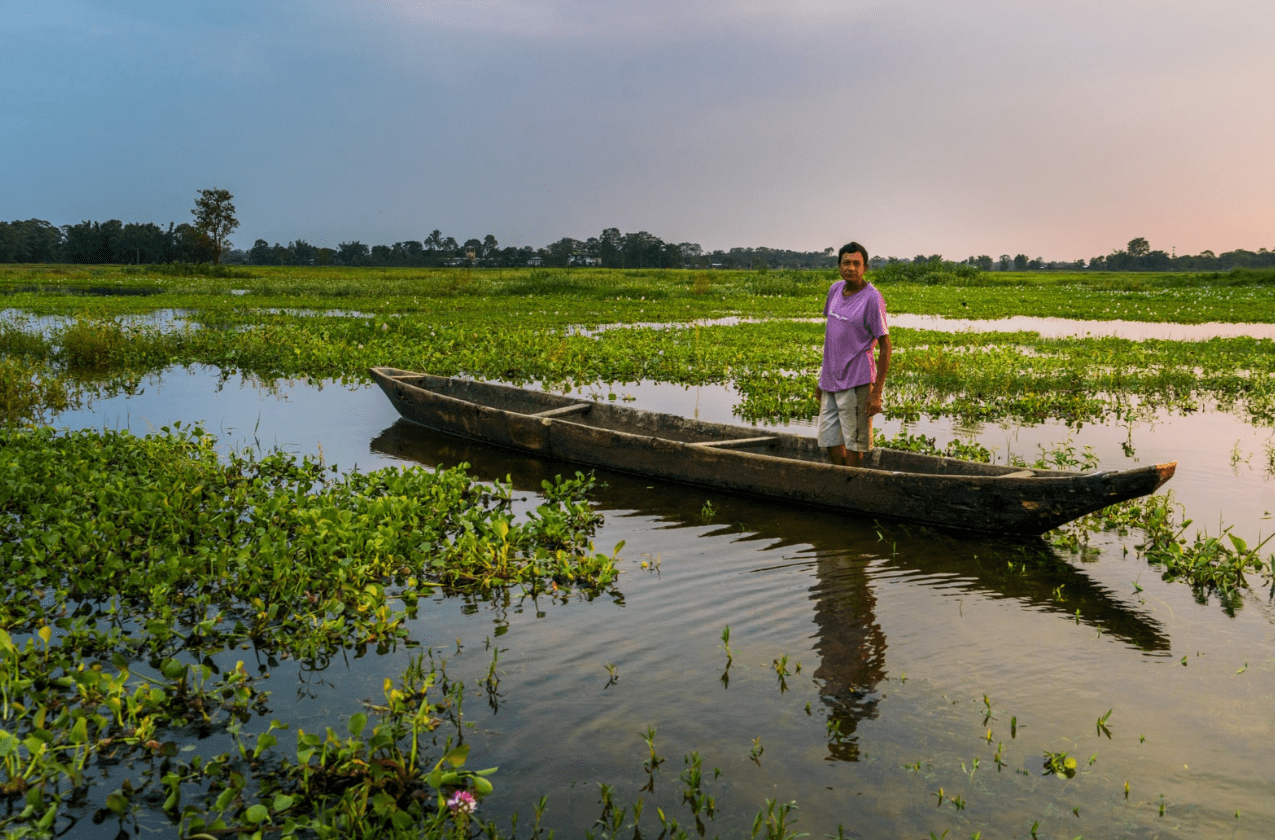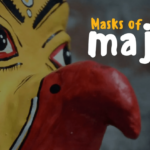Majuli Travel Guide: If you’ve heard about Majuli’s captivating beauty, seen countless photos online, and are now planning a visit, you’re in for a treat. We visited Majuli in January and, like many, had our doubts before arriving. However, once we set foot on this enchanting island, we were completely taken aback by its beauty. Here’s our detailed DIY Majuli Travel Guide, offering you everything you need to know (well, almost everything!)
Majuli Travel Guide
Where is Majuli?
Majuli is a river island located on the Brahmaputra River in Assam. It holds the title of being the largest river island in Asia and possibly the world, though there’s some debate about the latter. Majuli is a serene retreat from the bustling mainland, where nature has gently woven itself into the daily lives of its residents, creating a peaceful haven. The Brahmaputra flows to the south of the island, and the Kherkutia Xuti River merges with the Subansiri River to the north.
Once a vast expanse of over 1500 square kilometers, Majuli has been significantly reduced due to erosion by the Brahmaputra, now covering just 352 square kilometers. Despite ongoing erosion, Majuli remains large enough to house several small villages and has been designated as a separate district. It is home to various tribes, including the Mishings.
Upon arriving in Majuli, you’ll first encounter stretches of sandy terrain reminiscent of beaches. As you venture deeper into the island, you’ll be surrounded by lush green fields and water bodies. The scenery is predominantly green, and while the central markets of Garamur and Kamalabari may resemble a town, the interior of the island offers a glimpse into its charming rural essence.
The Satras of Majuli
About 600 years ago, the Hindu saint Sri Sankardev made Majuli his base, introducing a transformative way of life. This period marked a renaissance in Assam, with cultural advancements in art, music, dance, and religion centered in Majuli. Sankardev promoted Ek-Sarana-Hari-Naam-Dharma, a form of Neo-Vaishnavism, through institutions known as Satras (or Xatras). There are officially 31 Satras in Majuli, with prominent ones including Dakshinapat Satra, Kamalabari Satra, Auniati Satra, Garamur, Bengena-ati, and Samaguri Satra.
The Naamghar serves as the primary place of worship within the Satras, where you might encounter monks chanting hymns or playing cymbals. Besides being centers of religious practice, Satras are cultural hubs significantly influencing the local community. Many young boys join the Satras early in life, dedicating themselves to its practices.
Things to Do in Majuli
Explore the Satras:
A visit to Majuli is incomplete without exploring its tranquil Satras. Each Satra has its unique characteristics, and you can participate in morning or evening prayers and listen to local bhajans.
Visit the Mask-Making Village at Samaguri Satra:
Majuli is renowned for its masks, with the Samaguri (Chamaguri Satra) being the epicenter of this craft. Inside, you’ll find an array of masks used in Bhaona performances. Hem Chandra Goswami, a key figure in Majuli’s mask-making tradition, has been instrumental in keeping this art form alive. Although he was away at the time of our visit, we met Prasanna Goswami, who eagerly shared insights about the masks.
Discover the Pottery Village at Salmora:
Salmora is known for its traditional pottery. You can visit local potters, who will gladly show you their work. Unlike modern methods, they craft pottery using manual techniques.
Explore Handloom Villages:
Majuli is home to several handloom villages where women form cooperatives to weave intricate textiles. These handwoven items, including sarees and stoles, are even exported abroad. You can observe the weaving process and purchase these unique textiles.
Birdwatching:
Majuli is an excellent destination for birdwatching, with numerous kingfishers, egrets, and storks. During winter, migratory birds also visit. The island’s many Beels (ponds) are prime spots for birdwatching.
How to Reach Majuli
Getting to Majuli is relatively straightforward. First, travel to Jorhat, which is well connected to Guwahati by flight, train, and road. From Jorhat, take an auto or shared vehicle to Nemati Ghat. Regular ferries run from Nemati Ghat to Kamalabari Ghat in Majuli, with the first ferry departing at 8:30 AM and the last at 4:00 PM. Ferries from Majuli start at 8:00 AM and the last one is at 3:00 PM. The ferry ride itself is an experience to cherish.
You can also bring your car or bike across on the ferry by driving them onto the vessel.
Getting Around in Majuli
Scooters, bikes, and bicycles are available for rent in Majuli. Bicycles cost INR 100, while scooters and bikes are available for INR 500. Renting a vehicle gives you the freedom to explore the island at your own pace. We rented a scooter and enjoyed the freedom it provided.
Best Time to Visit Majuli
The best time to visit Majuli is during the winter season, when the weather is pleasant and ideal for exploration.
Where to Stay in Majuli
Majuli offers a range of accommodation options, including homestays and hotels. Many homestays are bamboo cottages, providing an authentic rural experience. Some guesthouses are located by the river, offering scenic views. Additionally, many Satras have guesthouses for devotees and tourists, allowing you to immerse yourself in the Satra’s practices and engage with the monks.
Dining Options
Majuli does not have standalone restaurants, but most homestays provide excellent meals. Ural Restaurant in Garamur serves local dishes, while Risong’s Kitchen offers Mishing cuisine. Note that it’s best to pre-order your meals here.
Majuli’s unique charm and tranquil pace make it a captivating destination. This guide aims to help you plan your visit to Majuli effectively, ensuring an enjoyable and budget-friendly experience.


